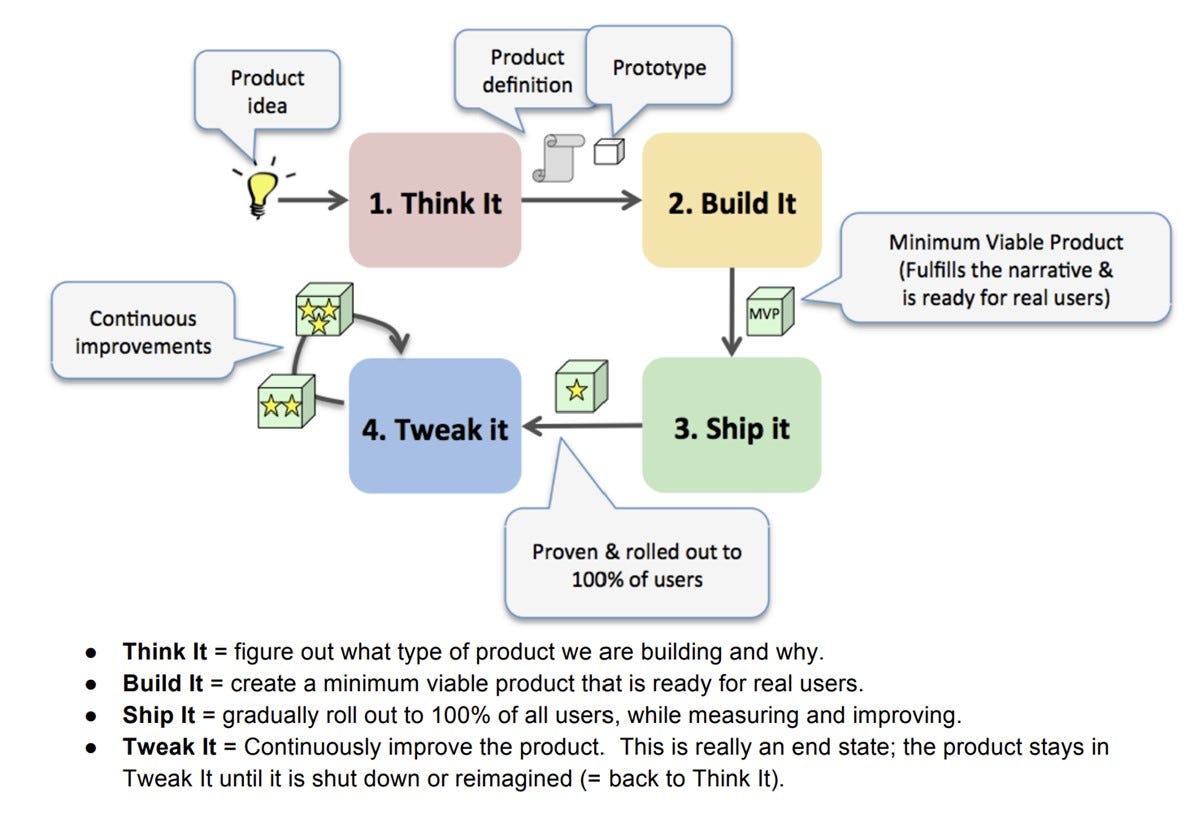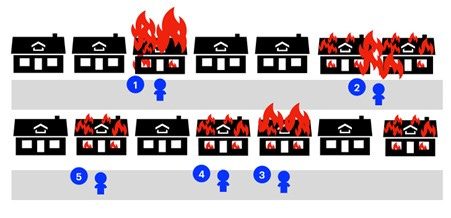#64. What I learned from Issra Omer of Spotify
On Building Products, Cultivating your Community, and Embracing Imposter Syndrome.
Welcome! I'm Nero Okwa and this is my newsletter on Building Product, Business, Career Development, and Africa. If you're receiving it, then you either subscribed or someone forwarded it to you.
You can subscribe here.
Subscribing would provide you access to not only these event review and weekly curated articles, but also my deep dives and entire collection of over 80 articles across topics like: Facilitating Discussions, Thinking about your Career, Kanye West, Figma, The Mindset for Success, Steve Jobs, and even Lessons for decision making from Alexander the Great and Abraham Lincoln, and more.
Is there a topic you currently struggle with? Let me know. You can message me at notesbynero@gmail.com.
Let's get into it.
Dear Reader,
Two weeks ago, I was lucky enough to attend an amazing product management event organised by the Black Product Manager Network (BPM) with Spotify: Fireside Chat with Issra Omer, Principal Product Manager at Spotify.
Drawing from a decade of product experience at Facebook and now Spotify, Issra Omer has led teams to build products that deliver exceptional user value. As an avid Spotify user myself, who has written several articles (8 to be exact) on Spotify’s product strategy, this was an incredible chance to learn from the insiders. The fireside chat started with a quick Q & A round with the moderator, and then questions were opened up to the audience.
I thought it would be helpful to share my notes from the session, providing useful context and links for further learning. My goal is to write more about the London product scene. I previously wrote my notes from the product management event with Shreyas Doshi, the product leader. Enjoy😊.
Background
At Spotify, Issra has worked with different teams (freemium, growth, and subscription) and is currently responsible for Spotify’s lyrics feature.
She began her product career at Meta (formerly Facebook) in Product Operations as a product specialist for videos and images. This got her in regular contact with product teams, and led to her decision to transition to a product management role.
On Lessons for day 1 as a product manager
PMs are important. Good PMs are able to zoom out, spot issues, and zoom in and go and help there. As a PM you need to be humble – no job is too small or big, and be able to identify whatever is needed.
On going from product manager to principal product manager
Paraphrasing:
You need to be able to engage in strategic thinking from ambiguity. You also need to figure out what the vision is, and how we execute, and make that vision a reality.
Secondly, you need to be able to influence people, and other teams. When working on Lyrics for Spotify, I had to influence other people, by talking to and making it important to them
This led to the question on ‘How do you influence people?’
On influencing people
Paraphrasing:
Understand your product roadmap and how it affects other things related to the product.
As mentioned earlier, have empathy and understand the other person/team’s goals. For example, when I was contemplating new features at Spotify I needed to speak to the Legal team, to understand what we can/cannot do regarding music licensing.
Build allyship with your managers/senior stakeholders, and your PM peers early in your career.
Did you experience any challenges as a black product manager, and how did you navigate them?
Paraphrasing:
When I became a Product Manager, as a woman of colour, there was no room for mistakes. But I heard this story that at Amazon, the CEO could call you at any time, and expects you to know everything about your product.
This helped me put the expectation on myself. I was driven to become the expert on my product, knowing it through and through.
Secondly, it is important to find allies. This is useful for when you have new ideas, you have someone to discuss them with.
Product Managers are often isolated, it helps to find your community (like the Black Product Managers Network). Imposter syndrome is a thing, but you have to ‘fake it till you make it’.
Finally, always support your people, who maybe going through a similar situation.
On her product experience at Spotify
At Spotify, there is a lot of influencing to make things happen, lots of discussion on strategy. We are always challenging ourselves, and this is based on the Swedish culture. Because of the limited app screen [real estate] we are always thinking about how to add new features but also maintain the smooth elegant experience. Everyone at Spotify is a music nerd and cares deeply about the product.
The focus is on the goal of the feature, compared to when I was at Facebook, we used data to win arguments and A/B tested different options to make decisions.
For Product Development we use the Spotify Model - “Think It”, “Build It”, “Ship It”, and “Tweak It” (read more here).

On the usefulness of her product design experience
My prior product design experience has been really useful. It helps me to be able to evaluate a hypothesis, explore the design space for it, and evaluate multiple solutions.
Q: Why did you go down the principal IC (individual contributor) product manager path [vs being a people’s manager]?
I chose that path because I like solving problems. Being a people’s manager, I wouldn’t be able to solve problems as much.
Q: What has been your biggest failure?
I was working on the redesign of the ‘Now Playing’ view in the Spotify app. It was a platform change, and there was a lot of pressure to have consensus.
I ended up spending time deep diving with engineers, rather than empowering my engineers to make the right decisions.
This was the lesson for me, so now when I work with Machine Learning (ML) engineers, rather than trying to be a ML engineer, I give them the best parameters and let them propose the best solution.
Q: How do you remain focused when there are multiple fires?
Always be asking yourself what is the most important thing you should be doing.
Ultimately it is a question of prioritization. This reminds me of an excellent post by Will Lawrence, in the Product Life newsletter:
A good product manager firefights. They see a fire, they try to put it out.
A great product manager surveys, prioritizes and finds leverage to minimize destruction. Importantly, they let some fires burn while they tackle others.

Q: How do you decide when to get into the weeds, empowering vs micromanaging?
Think about what you can uniquely provide to help engineers to make decisions.
Like the example I mentioned earlier on working with ML Engineers and providing them with the parameters needed.
Q: How do you balance reaching consensus and moving fast enough?
By having a thoughtful execution tree.
The thoughtful execution tree is a framework used at Spotify to think about how you go from a goal to an idea through the data & insights, to problem/opportunity, and hypothesis.
I first read about it in 2022, and I found it to be an excellent framework for thinking through and testing ‘ambiguous’ goals and problems. To learn more: article, presentation, Figma template.

Final advice
Fall in love with the problem and not the solution.
Give people the room to solve the problems themselves.
Also give them the room to drive it themselves.
I cannot agree more.
The final two points are really on empowering your team and giving them the opportunity to try things, learn, and grow.
Really understanding the problem, who has the problem? why they have the problem? How they are currently solving the problem? is so valuable. Going deep.
A quick way to get started going deep on the problem is the Five Why’s analysis – asking why five times till you get to the root cause of the problem (an example).
There is an excellent conversation between Lenny Rachitsky and Uri Levine (co-founder of Waze, and two-time unicorn builder) on falling in love with the problem for startup success.
A final point Issra mentioned during the discussion was: don’t be afraid to escalate. If you are working on something and you can’t align with other stakeholders, don’t be afraid to escalate.
Closing Thoughts
This was a great session to learn, network, and reflect with other product practitioners. I really enjoyed hearing Issra’s stories about building new features, her career decisions in product management, and time at Spotify.
In this article, I sought to provide more context on some of the statements and also links to helpful frameworks: Spotify’s 4 step product development process, thoughtful execution tree, Five Whys, and Falling in love with the problem and not the solution. I hope this helps.
Many thanks to Issra Omer, the Black Product Managers Network and Spotify for making this event possible, and Rakiya Suleiman and Carlton Fredericks of the organising team.
If you enjoyed this article I have written other product articles on Spotify, Figma, and Apple’s AI Strategy. I also write Nero’s Weekly (a weekly curated articles across topics), and book reviews where I summarize lessons learnt.
Would you like to read more product focused articles or something else? Is there a topic you currently struggle with? Let me know. You can message me at notesbynero@gmail.com.
If you’re finding this newsletter valuable, consider sharing it with friends, or subscribing at nerookwa.substack.com to receive all my deep dive and weekly articles.
Thanks for reading and bye for now.
Nero
Go Further





